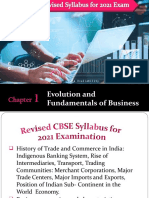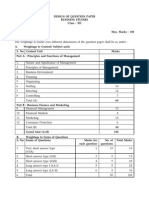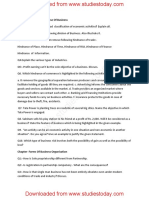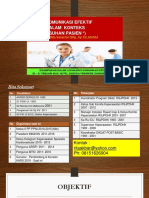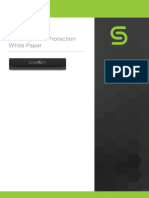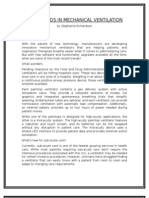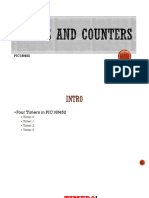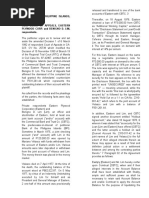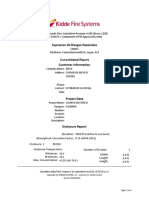Holiday Homework Class XI Accountancy PDF
Holiday Homework Class XI Accountancy PDF
Uploaded by
AlokCopyright:
Available Formats
Holiday Homework Class XI Accountancy PDF
Holiday Homework Class XI Accountancy PDF
Uploaded by
AlokOriginal Title
Copyright
Available Formats
Share this document
Did you find this document useful?
Is this content inappropriate?
Copyright:
Available Formats
Holiday Homework Class XI Accountancy PDF
Holiday Homework Class XI Accountancy PDF
Uploaded by
AlokCopyright:
Available Formats
ACCOUNTANCY
PREFACE
The home assignment , being given to the students , aims
at strengthening the concepts of each student through
reinforcement of topics covered in class lectures by
practicing the questions given in the assignment.
Three sample papers in each subject have been given.
The maximum benefit can be gained only if the student
goes through all the topics of fragment 1 thoroughly
before attempting the sample paper. The assignment will
not only act as a reinforcement tool but will also help the
students acquire the tendency of solving the entire paper
in one sitting, just like he/she sits in an examination for
three hours. Hence, improving student’s time
management skill in examination.
This assignment will also fetch the student 5 marks in
practical. The solutions of all the question papers given in
the home assignment have to be written on separate A-4
sheets.
For all the subjects , the assignments have to be
submitted in different folders respectively.
Last date to submit the assignment for each subject 5th
July ’19.
- PRINCIPAL
ASSIGNMENT - 1
ACCOUNTS : XI MARKS: 80
Note:- All question are compulsory.
Q.1 to Q20 are objective type carrying 1mark each.
Choose the correct answer
Q.1 Which qualitative characteristics of accounting information is reflected when accounting
information is clearly presented?
(a) Relevance (b) comparability
(c) Reliability (d) Understandability (1)
Q.2 Out of the following asset, which are is not an intangible asset? (1)
(a) Patents (b) Machinery
(c) goodwill (d) Trademark
Q.3 Provision for doubtful debts is made due to (1)
(a) Materiality Principle (b) Money measurement principle
(c) Consistency Principle (d) Prudence Principle
Q.4 In accruel basis of accounting recording is made of: (1)
(a) Cash transaction (b) Credit transaction
(c) both (a) and (b) (d) Neither (a) nor (b)
Q.5 An increase in one asset will result in (1)
(a) Decrease in another asset (b) Increase in a liability
(c) Increase in capital (d) Any of the above.
Q.6 Goods purchased on credit will lead to __________ in stock and creditors . (1)
Q.7 Increase in liability is recorded on the ___________________ side. (1)
Q.8 Pay –in-slip is a document used to deposit ________________ or cheques into the bank (1)
Q.9 According to the companies Act, 2013 companies are required to follow___________ basis of
accounting. (1)
Q.10 Accounting to the ____________________ principle , the stock is valued at lost or net realizable value
whichever is less. (1)
Q.11 Accounting Principles are rigid in nature. (1)
Q.12 Cash basis of accounting is considered the most scientific system of accounting . (1)
Q.13 Trade discount is the rebate allowed to the buyer for making early payment. (1)
Q.14 Accounting record only those transactions which are of financial nature. (1)
Q.15 Goods will drawn by owner for personal use is known as ‘Drawings’ (1)
Answer the following in one sentence :
Q.16 What is meant by Intangible Assets? (1)
Q.17 What do you mean by Bad debts? (1)
Q.18 Define Accounting. (1)
Q.19 What are current liabilities? (1)
Q.20 What is capital expenditure. (1)
Q.21 Give any three advantages of Accounting (3)
OR
Give any three limitations of accounting.
Q.22 Explain the meaning of following turns (any four) (3)
(a) Goods (b) Drawings (c) Current Assets
(d) Cash Discount (e) Liabilities
Q.23 Prepare ‘T’ shape account of machinery from the following transactions: (4)
(a) Purchase of machinery for cash Rs. 80,000.
(b) Machine destroyed by fire Rs. 10,000.
(c) Machine purchased on credit Rs. 20,000.
(d) Goods costing Rs. 15,000 sold at profit of Rs. 5,000.
Distinguish between book keeping and accounting.
Q.24 Show the following transaction in accounting equation. (4)
(a) Started business with cash Rs. 3,00,000 and goods Rs. 1,00,000.
(b) Purchased goods for Rs. 10,000 on credit
(c) Paid wages Rs. 2,000
(d) Goods costing Rs. 12,000 was sold for Rs 15, 000
Q.25 Give an examples for a transaction which results in (4)
(a) Increase in Assets and increase in liability.
(b) Decrease in the Assets and decrease in the liabilities.
(c) Increase in a Asset and decrease in other asset.
(d) Increase in Asset and increase in capital.
Q.26 Calculate total equity if: (4)
(i) Owner’s Equity in the beginning Rs. 2,00,000
(ii) Equity of creditors at the end Rs. 60,000
(iii) Revenue during the period is Rs. 120,000
(iv) Expenses during the same period are Rs. 70,000
Q.27 Show the accounting equation on the basis of the following transaction (4)
(i) Commenced business with cash Rs. 5,00,000
(ii) Purchased goods for Rs. 20,000 in cash and Rs. 10000 on credit.
(iii) Sold goods costing Rs. 3000 for Rs. 5,000 in cash.
(iv) Goods costing Rs. 1,000 withdrawn for personal by owner.
(v) Salaries paid Rs. 9,000.
(vi) Rent received Rs. 10,000.
Q. 28 Explain the concept of money measurement principle and accounting period principle. (4)
Q.29 Explain any four source document. (6)
OR
What do you mean by voucher? Explain different types of vouchers.
Q.30 Explain any three principles of Accounting. (6)
Q.31 Show Accounting equation from the following transactions (8)
(i) Started business with cash Rs. 50,000 and goods Rs. 25,000
(ii) Purchased furniture for cash Rs. 5,000
(iii) Purchased goods on credit Rs. 20,000
(iv) Sold goods costing Rs. 7,000 at 20% Profit on credit.
(v) Cash Rs. 3,000 and goods Rs. 4,000 withdrawn for personal use of owner.
(vi) Outstanding salaries Rs. 6,000.
(vii) Rent paid in advance Rs. 2,500
Q.32 On which side, the increase in the following accounts will be recorded? Also specify the nature
of account to which they belong. (8)
(i) Furniture Account (ii) Debts Account
(iii) Interest received account (iv) cash A/c (v) Bank A/c
(vi) Bills payable A/c (vii) Rent A/c (viii) Vivek (Proprietor)
OR
Show Accounting equation from the following transactions.
(i) Started business with cash rupees 1,00,000
(ii) Deposited in bank Rs. 60,000
(iii) Purchase goods from shyam Rs. 30,000
(iv) Sold goods costing Rs. 20,000 for 25000 to Pradeep
(v) Paid salary Rs. 6000
(vi) Commission received Rs. 7000
(vii) Rent outstanding Rs. 4000
(viii) Cash withdrawn for personal use Rs. 4000
ASSIGNMENT-2
ACCOUNTS : XI MARKS: 80
INSTRUCTIONS:-
(i) All questions are compulsory.
(ii) Attempt all parts of a particular question at one place.
(iii) Show your working clearly.
Q.1- The position of businessman was as follows:- cash Rs.5,000, Debtors Rs.20,000, machinery
Rs.60,000, stock Rs.25,000, capital Rs.75,000 calculate liabilities. 1
Q.2- Write the transaction for decrease in assets and decrease in capital. 1
Q.3- Give fundamental accounting equation. 1
Q.4- Name the side on which increase in capital is recorded in T-Shape a/c. 1
Q.5- If total assets of a business are Rs.10,00,000 and capital is Rs.4,00,000. Calculate creditors. 1
Q.6- What is full form of GAAP? 1
Q.7- What is accrual basis? 1
Q.8- Income is measured on the basis of which concept. 1
Q.9- Name any two external users of accounting information? 1
Q.10- Give any two objectives of accounting. 1
Q.11- How do we ascertain the financial position of the business? 1
Q.12- What is capital? 1
Q.13- Give to examples of Intangible Assets. 1
Q.14- What is trade discount? 1
Q.15- As per Income Tax Act, accounting period is : 1
(a)From 1st January to 31st December (b) From 1st April to 31st March
(c)From 1st July to 30th June (d) From Diwali to Diwali
Q.16.- According to which concept even the proprietor of the business is treated as a creditor of the
business : 1
(a) Going concern concept (b) Cost concept
(c) Business entity concept (d) Accounting period concept
Q.17- Due to which of the following , contingent liabilities are shown in the Balance Sheet : 1
(a) Dual Aspect Concept (b) Convention of full Disclosure
(c) convention of Materiality (d) Going concern concept
Q.18- Which of the following is capital expenditure? 1
(a) Wages (b) Wages paid for building construction
(c) Repair expenses of building (d) Advertisement Expenses
Q.19- Goods means:- 1
(a) Commodity to be bought and sold (b) Commodity to be bought but not to be sold
(c) Commodity to be used as an assets (d)All of Above
Q.20- A person who owns money to the firm is called……………………. 1
(a) Debtor (b) Creditor
(c) Supplier (d) Customers
Q.21- Distinguish between Fixed Assets and Current Assets. 3
Q.22- Difference between Book Keeping and Accounting. 3
Q.23- Define the following terminology: 4
(a) Drawing (b) Voucher (c) Gain (d) Debtors
Q.24- State Four needs of Accounting Standard. 4
Q.25- Give one example of each of the following transactions: 4
(a) Decrease in an assets and a liability.
(b) Increase in assets and capital.
(c)Decrease in assets and capital.
(d) Increase in an asset and a liabilities.
Q.26- Open ‘T’ shape account for Machinery and write the following on the proper side : 4
1. Machinery purchased for Rs.5,00,000.
2. Machinery sold Rs.1,20,000
3. Machinery discarded Rs.50,000
4.New Machinery purchased Rs.2,00,000
5.Machinery destroyed Rs.40,000.
Q.27- Prepare the Accounting Equation on the basis of the following transactions: 4
(a) Started Business with cash Rs.70,000.
(b) Credit purchase of goods Rs.18,000.
(c) Payment made to creditors in full settlement Rs.17,500.
(d) Purchase of machinery for cash Rs.20,000.
Q.28- Explain Four Qualitative characteristics of accounting information. 6
Q.29- Explain Four Benefits of Accounting Standards. 6
Q.30- Y started a business on 1st April 2013 with a Capital of Rs.2,00,000 and a loan of Rs.75,000 from
the bank. During the year, he had introduced additional capital of Rs.60,000 and had withdrawn
Rs.36,000 for personal purposes. On 31st March,2014 his assets were Rs.3,80,000. Find out his
capital as on 31st March ,2014 and profit earned during the year 2013-14. 6
Q.31- Show the accounting equation on the basis of the following transactions and also show the Balance
Sheet : 8
(i) Started business with Cash Rs.60,000 and Goods Rs.30,000.
(ii)Purchased goods for cash Rs.40,000 and on credit Rs.25,000.
(iii) Goods costing Rs.48,000 sold at a profit of 33.33%. Three-fourth payment received in cash.
(iv) Goods costing Rs.20,000 sold at a loss of 5%, out of which Rs.12,000 received in Cash.
(v) Paid Rent Rs.4,000 and Salary Rs.6,000.
(vi) Received Cash from Debtors Rs.15,000.
(vii) Paid telephone bill amounting to Rs.800
Q.32- Explain the following concepts: (any four):- 8
(a) Going Concern Concept (b) Business Entity Concept
(c) Dual Aspect Concept (d) Accounting Period Concept
(e) Matching Concept
You might also like
- OTQ - BST - XII - Mahajan & Kapoor - 2021-22Document67 pagesOTQ - BST - XII - Mahajan & Kapoor - 2021-22Mohammed Faizan100% (1)
- WORKSHEET CH - Small Business and EntrepreneurshipDocument2 pagesWORKSHEET CH - Small Business and EntrepreneurshipAchintya SinghNo ratings yet
- XI MCQs Prepared by ExpertsDocument66 pagesXI MCQs Prepared by ExpertsAdrian RoyNo ratings yet
- Accountancy Class 11 Most Important Sample Paper 2023-2024Document12 pagesAccountancy Class 11 Most Important Sample Paper 2023-2024Hardik ChhabraNo ratings yet
- Case Studies of BST Class 11 CHDocument6 pagesCase Studies of BST Class 11 CHBhavik gamerNo ratings yet
- Class Xi BST Holiday HomeworkDocument4 pagesClass Xi BST Holiday HomeworkSachpreet KaurNo ratings yet
- Class 11 Accountancy Top 55 Mcqs by DR Vinod Kumar Author of Ultimate Book of AccountancyDocument18 pagesClass 11 Accountancy Top 55 Mcqs by DR Vinod Kumar Author of Ultimate Book of AccountancyJasmine SainiNo ratings yet
- Cbse Sample Papers For Class 12 Accountancy With Solution PDFDocument24 pagesCbse Sample Papers For Class 12 Accountancy With Solution PDFVicky PawarNo ratings yet
- Chapter-6 Dissolution OF Partnership FirmDocument4 pagesChapter-6 Dissolution OF Partnership FirmabiNo ratings yet
- CBSE Class 12 Accountancy Accounting For Debentures WorksheetDocument13 pagesCBSE Class 12 Accountancy Accounting For Debentures WorksheetJenneil CarmichaelNo ratings yet
- MCQ Theory Base of AccountingDocument4 pagesMCQ Theory Base of Accountingl.kunalswami142No ratings yet
- 6.accounting For DebenturesDocument22 pages6.accounting For Debenturestripatjotkaur757No ratings yet
- Assertion and Reasoning (A-R) Based Questions: Name of The Chapter:-Ratio AnalysisDocument6 pagesAssertion and Reasoning (A-R) Based Questions: Name of The Chapter:-Ratio AnalysisSiddhi Jain100% (1)
- Assertion-Reason Based Questions:Fundamentals of Partnership Class 12th AccountancyDocument2 pagesAssertion-Reason Based Questions:Fundamentals of Partnership Class 12th AccountancyARPIT VAIDYA100% (4)
- Studies - (Chapter - 3) Environment, BST Class 12Document23 pagesStudies - (Chapter - 3) Environment, BST Class 12Manish NagdevNo ratings yet
- Strictly Confidential: (For Internal and Restricted Use Only)Document24 pagesStrictly Confidential: (For Internal and Restricted Use Only)bhaiyarakeshNo ratings yet
- Change in Profit Sharing Ratio - Weekly TestDocument6 pagesChange in Profit Sharing Ratio - Weekly TestAbi Abi100% (1)
- Cbse Accountancy Class XIi Sample Paper PDFDocument27 pagesCbse Accountancy Class XIi Sample Paper PDFFirdosh Khan100% (2)
- Accountancy Worksheet Grade XI Chapter 1 and Chapter 2Document2 pagesAccountancy Worksheet Grade XI Chapter 1 and Chapter 2Abhradeep Ghosh100% (4)
- Business Studies Revision Worksheet Chapter 1 Class 11Document2 pagesBusiness Studies Revision Worksheet Chapter 1 Class 11Gunjan JainNo ratings yet
- Worksheet INTERNAL TRADEDocument41 pagesWorksheet INTERNAL TRADEMayank VermaNo ratings yet
- Business StudiesDocument11 pagesBusiness StudiesBalraj singh NattNo ratings yet
- PPT-1, B.st.,class11, Evolution of Business NPPTX PresentationDocument31 pagesPPT-1, B.st.,class11, Evolution of Business NPPTX PresentationHarshul MittalNo ratings yet
- Assertion 4Document4 pagesAssertion 4MiitNo ratings yet
- Mcqs PDF Business Studies x1Document204 pagesMcqs PDF Business Studies x1Vivek Bisen100% (2)
- Test Papers (2021-22) Bus. StudiesDocument14 pagesTest Papers (2021-22) Bus. Studiesprateek gargNo ratings yet
- Chapter-1 Nature & Significance of Management: Multiple Choice QuestionsDocument13 pagesChapter-1 Nature & Significance of Management: Multiple Choice QuestionsLONE WOLF TECHNo ratings yet
- 652oswaal Case-Based Questions Accountancy 12th (Issued by CBSE in April-2021)Document7 pages652oswaal Case-Based Questions Accountancy 12th (Issued by CBSE in April-2021)Nitesh kuraheNo ratings yet
- Ts Grewal Solutions For Class 11 Accountancy Chapter 5 Journal PDFDocument46 pagesTs Grewal Solutions For Class 11 Accountancy Chapter 5 Journal PDFQueen MNo ratings yet
- Question Bank - XII Accounts MCQDocument192 pagesQuestion Bank - XII Accounts MCQHarshal KaramchandaniNo ratings yet
- Acc Ch-7 Average Due Date SaDocument15 pagesAcc Ch-7 Average Due Date SaShivaSrinivas100% (3)
- CBSE Class 12 Accountancy Company Accounts Worksheet Set CDocument2 pagesCBSE Class 12 Accountancy Company Accounts Worksheet Set CJenneil CarmichaelNo ratings yet
- B ST XI Subhash Dey All Chapters PPTs Teaching Made EasierDocument1,627 pagesB ST XI Subhash Dey All Chapters PPTs Teaching Made EasierAarush GuptaNo ratings yet
- Retirement of Partners Cbse Question BankDocument6 pagesRetirement of Partners Cbse Question Bankabhayku1689No ratings yet
- BST Worksheet Class 11Document26 pagesBST Worksheet Class 11btsqueen62No ratings yet
- 4 Retirement and Death of A PartnerDocument9 pages4 Retirement and Death of A PartnerAman Kakkar0% (1)
- Accounting EquationDocument6 pagesAccounting EquationFayaz MohammedNo ratings yet
- UT-1 Business StudiesDocument6 pagesUT-1 Business Studieskarishma prabagaran100% (1)
- Question Paper of Business Studies Class 12Document10 pagesQuestion Paper of Business Studies Class 12Mahak AgrawalNo ratings yet
- Cbse Business Studies XII Sample Paper 1Document6 pagesCbse Business Studies XII Sample Paper 1Firdosh KhanNo ratings yet
- Worksheet Final AccountsDocument9 pagesWorksheet Final AccountsAa BbNo ratings yet
- Accounts 11th Class Sample PaperDocument8 pagesAccounts 11th Class Sample PaperVineet SinghNo ratings yet
- Worksheet CH - Internal TradeDocument2 pagesWorksheet CH - Internal TradeAchintya Singh100% (2)
- 12 CB Test Retirement of PartnerDocument2 pages12 CB Test Retirement of Partnerkhushi Sharma0% (1)
- Accountancy Question BankDocument146 pagesAccountancy Question BankSiddhi Jain100% (1)
- Assignment Class XI Chapter - 1 Business, Trade and CommerceDocument2 pagesAssignment Class XI Chapter - 1 Business, Trade and CommerceChhavi Hasija100% (2)
- 11 Business Studies Term - 1 MCQsDocument102 pages11 Business Studies Term - 1 MCQsVaSuDeVaNNo ratings yet
- Worksheet For Issue of Share and DebentureDocument2 pagesWorksheet For Issue of Share and DebentureLaxmi Kant SahaniNo ratings yet
- CBSE Class 11 Business Studies - Question BankDocument7 pagesCBSE Class 11 Business Studies - Question BankRahul Suthar0% (1)
- Goodwill Questions and Their SolutionsDocument8 pagesGoodwill Questions and Their SolutionsAMIN BUHARI ABDUL KHADER100% (1)
- Goodwill PDFDocument5 pagesGoodwill PDFBHUMIKA JAINNo ratings yet
- WORKSHEET ch-3 BST CLASS XIIDocument2 pagesWORKSHEET ch-3 BST CLASS XIIKaustubhNo ratings yet
- CBSE Class 12 Accountancy Accounting Ratios WorksheetDocument3 pagesCBSE Class 12 Accountancy Accounting Ratios WorksheetJenneil Carmichael100% (1)
- Accountancy Chapter 5 - Retirement & Death of A Partner: Kvs Ziet Bhubaneswar 12/10/2021Document4 pagesAccountancy Chapter 5 - Retirement & Death of A Partner: Kvs Ziet Bhubaneswar 12/10/2021abiNo ratings yet
- Assessement Test 5 - Admission of PartnerDocument2 pagesAssessement Test 5 - Admission of PartnerShreya Pushkarna100% (2)
- Class 12th Worksheet StaffingDocument2 pagesClass 12th Worksheet Staffingkarishmapal9696No ratings yet
- Tapan Pathak Case StudiesDocument33 pagesTapan Pathak Case StudiesNeelee SoniNo ratings yet
- HALF YEARLY Q.P. ACC. SET - 1 (2023-24)Document8 pagesHALF YEARLY Q.P. ACC. SET - 1 (2023-24)Shweta AgarwalNo ratings yet
- Iatfe V4ggoDocument15 pagesIatfe V4ggogookhalo16No ratings yet
- Amardeep XI First TermDocument8 pagesAmardeep XI First TermAnahita GuptaNo ratings yet
- 2021-Packing List No PH-PL0018 - PH0090 - PH0091 - PH0092 - PH0093 - PH0...Document1 page2021-Packing List No PH-PL0018 - PH0090 - PH0091 - PH0092 - PH0093 - PH0...WO AHNo ratings yet
- 11 Genertal Orders : Section 11-TitleDocument3 pages11 Genertal Orders : Section 11-TitleAlmirah MakalunasNo ratings yet
- Canada SCC Mexico Nyce or Nom United States NRTLDocument5 pagesCanada SCC Mexico Nyce or Nom United States NRTLHamza saeedNo ratings yet
- A Binary Sequence Generator Based On The Kolakoski Sequence and Multiples of Odd PrimesDocument5 pagesA Binary Sequence Generator Based On The Kolakoski Sequence and Multiples of Odd PrimesJoel Reyes Noche100% (2)
- Enterprise NVR-AS 4000 Linux Appliance User GuideDocument41 pagesEnterprise NVR-AS 4000 Linux Appliance User GuideIader Ricardo Andrade RomeroNo ratings yet
- Dr. Rita Sekarsari SKP.,SP KV.,MHSM - Konsep Komunikasi - PersiDocument58 pagesDr. Rita Sekarsari SKP.,SP KV.,MHSM - Konsep Komunikasi - PersiAnonymous nJKIYJ87aSNo ratings yet
- Manufacturing Method of Cotter JointDocument10 pagesManufacturing Method of Cotter JointAkshay Jadhav33% (6)
- Cohesity Data Protection White PaperDocument12 pagesCohesity Data Protection White Paperrandyramandani3No ratings yet
- Đề thi HSG Anh 8Document6 pagesĐề thi HSG Anh 8cloudytrannNo ratings yet
- New Trends in Mechanical VentilationDocument4 pagesNew Trends in Mechanical Ventilationashley_castro_4No ratings yet
- A Review On Preparation of Low Cost Adhesive From Waste Materilal Using Citrus FruitsDocument10 pagesA Review On Preparation of Low Cost Adhesive From Waste Materilal Using Citrus FruitsPRASHANT INGOLENo ratings yet
- AI Infrastructure Reference Architecture: IBM SystemsDocument28 pagesAI Infrastructure Reference Architecture: IBM SystemsBisyron WahyudiNo ratings yet
- End-User License Agreement: 1. DefinitionsDocument3 pagesEnd-User License Agreement: 1. DefinitionsSimbarashe MarisaNo ratings yet
- Prediction model of chloride diffusion in concrete considering the coupling effects of coarse aggregate and steel reinforcement exposed to marine tidal environmentDocument18 pagesPrediction model of chloride diffusion in concrete considering the coupling effects of coarse aggregate and steel reinforcement exposed to marine tidal environmentdsdrefdwg4No ratings yet
- 1011 LbenDocument6 pages1011 LbenCALVINNo ratings yet
- Pipe Strut Vs Laced Strut - CSPDocument39 pagesPipe Strut Vs Laced Strut - CSPAnonymous hhdd4mOmOh100% (1)
- High Vacuum Storage ContainersDocument2 pagesHigh Vacuum Storage ContainerspcbstepNo ratings yet
- Kaspersky Security Center 14 Windows-EnglishDocument1,542 pagesKaspersky Security Center 14 Windows-EnglishsaeedNo ratings yet
- TimersDocument22 pagesTimersghulam mustafaNo ratings yet
- RJAF Matsumoto AD2 20240321Document12 pagesRJAF Matsumoto AD2 20240321keisuke.1005.comNo ratings yet
- Business Class Trucks Driver's ManualDocument248 pagesBusiness Class Trucks Driver's ManualJorge Gregorio Segura100% (1)
- UntitledDocument2 pagesUntitledMaria Franchisca AsioNo ratings yet
- Whelen/Aeroflash/Cessna Cross Reference ListDocument3 pagesWhelen/Aeroflash/Cessna Cross Reference ListCTN2010No ratings yet
- SPCL Bank DepositsDocument13 pagesSPCL Bank DepositsJImlan Sahipa IsmaelNo ratings yet
- Hotel de L'opera Internship ReportDocument30 pagesHotel de L'opera Internship Reportgiangtuankiet2703No ratings yet
- Regulatory Framework of Business IDocument146 pagesRegulatory Framework of Business IRICKY KALITANo ratings yet
- Supresion de Riesgos Especiales: Calculation Date/Time: Martes, 6 de Septiembre de 2022, 05:30:05 P. MDocument8 pagesSupresion de Riesgos Especiales: Calculation Date/Time: Martes, 6 de Septiembre de 2022, 05:30:05 P. MFRANCISCO2003360602No ratings yet
- en Mullite Ceramics Its Properties StructurDocument10 pagesen Mullite Ceramics Its Properties StructurPriyabrataTaraiNo ratings yet
- Insulin ChartDocument1 pageInsulin ChartChristian BagaresNo ratings yet
- Find Friend A StoryDocument3 pagesFind Friend A StoryShafiul AkashNo ratings yet
































